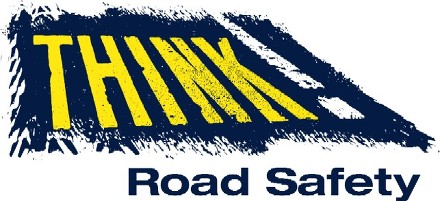Limiting Your Vehicle Losses – Auto Exposures – Auto Loss
Tips and Tricks to Limiting Your Vehicle Losses – Auto Loss and Auto Exposures
By: Allen Financial Insurance Group
Contact us for a no obligation quote or information about Auto Exposures
One out of four work-related deaths is caused by motor vehicle accidents. To pave the way for improved driver safety, start with these tips.
Auto accidents are serious and costly. They can cause injuries, some of which result in permanent disability or even death. Costs also include damage to vehicles and property, lost work time for injured employees, lost productivity and third-party liability.
- Carefully select and supervise employees who will drive your vehicles.
Before you hire any prospective drivers for your company, even those who will drive only occasionally, check their Motor Vehicle Records (MVRs). Then periodically, recheck MVRs for all currently employed drivers. Certain background checks may also be required by federal and state laws, including reference checks, prior employer checks, and license validation.
Action Step: Develop, document, and implement a formal driver selection program. - Consider testing your drivers for use of controlled substances and alcohol.
Any employer has the right to test potential drivers for use of controlled substances and alcohol. And all employers whose drivers are required to have Commercial Driver’s Licenses must have testing programs in place for controlled substances and alcohol.
Action Step: Learn more about whether you’re subject to alcohol and controlled substance testing requirements, and if so, what those requirements entail. Check federal requirements for controlled substances and alcohol testing. - Implement a comprehensive driver-training program.
Your drivers represent your company. Make sure they’re as well trained as your sales or service representatives.
Action Step: Develop and implement a comprehensive driver training program that encompasses: 1) initial training, including company and vehicle orientation and defensive driving techniques; 2) refresher training, designed to maintain driver skill levels and update drivers on any changes in operation routes, new equipment or regulations; and 3) remedial training, which should be provided when any accidents or near misses occur or when you learn of unsatisfactory performance.

Do you provide company cars or trucks to any of your employees? If so, have you made it clear how you expect your employees to use those vehicles?
Action Step:Consider limiting employees’ use of company-owned vehicles for personal reasons, perhaps based on certain geographical or time considerations. And think carefully about whether you allow your employees’ family members, especially youthful drivers, to use your company vehicles.
5. Make sure that employee vehicles used for your business are properly insured.
If your employees use their own vehicles for company business, you’ll want to make sure that they have adequate personal auto insurance.
Action Step: Request Certificates of Insurance from any of your employees who use their vehicles for company business. You may also ask that your employees name you as an “insured” on their auto insurance policies, which would indicate to their insurance companies that their vehicles are used for business purposes.
6. Maintain your vehicles regularly.
A little preventive care can go a long way in extending the life of your company’s vehicles, ensuring the safety of their passengers, and reducing your liability.
Action Step: Implement a comprehensive, documented vehicle inspection and maintenance program covering: 1) preventive maintenance (regular oil changes, vehicle lubrications, tire replacements, and system adjustments); 2) demand maintenance (as soon as any item needs to be repaired or replaced, like light bulbs or wiper blades); and 3) crisis maintenance (to address any breakdowns).
Do you wonder when it’s more cost-effective to purchase a new vehicle rather than repair an old one? There’s no need to guess, if you document your repairs.
Action Step: Keep a file for each of your vehicles, including all vehicle condition reports and maintenance/repair records. This information can be very helpful in determining each vehicle’s “break-even point.”
8. Caution your drivers about the safe use of cell phones.
Drivers’ use of cell phones is allegedly responsible for a growing number of traffic accidents. Keep in mind that you may be responsible for any damages caused by accidents involving your vehicles or your employees.
Action Step: If you provide cell phones or radios to your drivers, it’s especially important that you establish a policy for their safe use. Make sure that you document and distribute this policy to each driver.
9. Establish a formal process for reporting and investigating motor vehicles incidents.
Most accidents are preventable. It’s important that you investigate any accidents or near misses involving drivers of company-owned vehicles. The information you gather can help you prevent similar incidents and can help you defend any legal action which may result
.Action Step: Determine the cause of the accident, and whether the driver did all he or she reasonably could to prevent it. If you find that the driver could have done more, provide remedial training. If the problem is severe enough, consider disciplinary action.
10. Make sure your drivers get enough sleep.
Driver fatigue plays a significant role in many motor vehicle accidents. If your drivers have Commercial Driver’s Licenses, make sure that you follow interstate commerce regulations about how many hours your employees may drive before they must rest. Learn more about the impact of fatigue on accidents.
Action Step: Review the scheduling practices for your company’s drivers. Even if you’re not subject to DOT regulations, educate your driving employees about the dangers of fatigue. Sales employees, service technicians, delivery personnel or other employees who put in long days on the road are also vulnerable to fatigue and its risks.
Reduce Losses from Auto Accidents
- Permit only properly qualified persons to operate your company’s vehicles.
- Evaluate your drivers’ Motor Vehicle Records periodically (we recommend annually) against defined acceptability criteria.
- Road test potential drivers using vehicles that they will be expected to operate.
- Establish “Rules of the Road” defining acceptable day-to-day use and operation of vehicles including but not limited to:
- Drivers must inspect vehicle prior to use
- Mandated seat belt use
- Prohibition or “hands free” only use of cell phones and other electronic devices while driving
- Operate within posted speed limits and obey all traffic control devices/signage
- If personal use of company vehicles is permitted, define who can drive and permissible personal use.
- If employees driver their own vehicles for business you should:
- Qualify employees the same as you would a driver of a company vehicle
- Verify that adequate insurance is in place for the vehicle being used
- Ensure that the vehicle is in good condition and generally meets today’s safety standards
- Require that business operations of personal vehicles be conducted under same rules and requirements as company vehicles
- Consider the use of telematics/GPS tracking as part of your fleet safety management program – through the monitoring of driver activities such as speeding, hard braking, seat belt use, etc. you can improve behavior by positive coaching and counseling drivers.
- Enhance driver safety performance and awareness through structured safe vehicle operations training, incentives and defined accountability for unacceptable performance.
- Ensure that your vehicles are maintained in accordance with the manufacturers’ requirements. Establish a system to ensure that drivers report any maintenance issues in a timely manner.
- Ensure that drivers know what to do in the event of an accident and equip each vehicle with an accident reporting kit.
- Analyze your accidents and reported near misses to better understand the cause and to minimize future occurrences.


